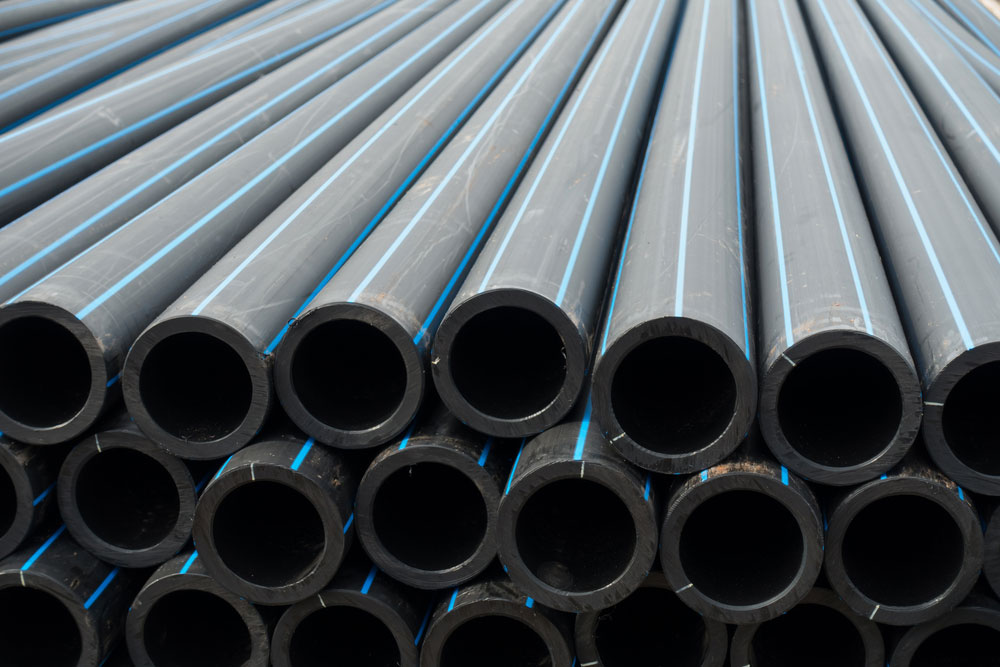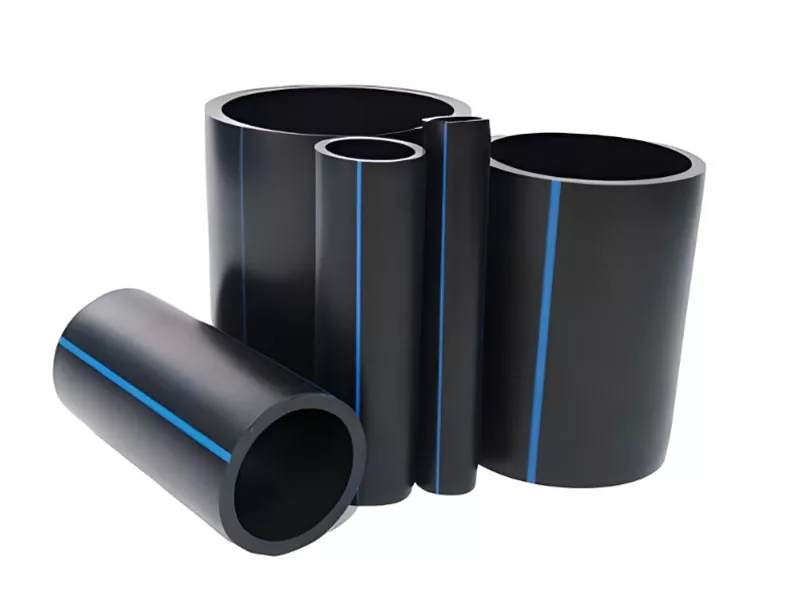The Definitive Handbook to Pipe Manufacturing Midland TX for Energy Projects
Wiki Article
Discover the Production Refine Behind High-Quality HDPE Pipeline and Its Applications
The production procedure of high-quality HDPE pipelines is detailed and systematic. It begins with the selection of resources that boost efficiency. Following this, ethylene undergoes polymerization to create resin, which is after that formed through extrusion. Quality control is critical, making sure that the final item fulfills strict standards. However, the trip of HDPE pipelines does not end with manufacturing. Their applications throughout numerous sectors expose a wider significance worth taking a look at.Recognizing HDPE: Residences and Advantages

High-density polyethylene (HDPE) is a flexible polycarbonate understood for its resilience and resistance to numerous environmental factors. This product displays superb tensile strength, making it appropriate for demanding applications. Its low-density framework adds to a lightweight item, assisting in convenience of dealing with and setup. HDPE also showcases exceptional resistance to chemicals, which minimizes deterioration when exposed to extreme materials.
The material's low wetness absorption additionally improves its long life, making it suitable for usage in pipelines and storage tanks. Furthermore, HDPE is immune to ultraviolet (UV) radiation, making sure that products maintain their integrity even when subjected to sunshine. Additionally, its adaptability allows for the creation of elaborate shapes without compromising toughness. The eco-friendly nature of HDPE, commonly acquired from recycled products, includes in its allure, promoting sustainable techniques in production. On the whole, these residential properties and benefits make HDPE a favored option for different industrial and consumer applications.
Resources Option for HDPE Manufacturing
The choice of basic materials for HDPE production is necessary to validate the last item fulfills the wanted requirements and quality requirements. High-density polyethylene (HDPE) is mainly produced from polymerized ethylene, stemmed from nonrenewable fuel sources such as all-natural gas or petroleum. The high quality of these feedstocks considerably influences the mechanical and thermal properties of the final HDPE.Additives likewise play a considerable function in boosting HDPE's efficiency, consisting of antioxidants, UV stabilizers, and colorants, which improve durability and resistance to ecological aspects. The selection procedure need to think about not only the chemical structure of the raw materials but additionally their processing characteristics to assure efficient production.
Furthermore, the sourcing of resources should prioritize sustainability and compliance with environmental guidelines, as accountable techniques are important in today's market. Eventually, mindful basic material choice lays the structure for creating high-quality HDPE pipes ideal for diverse applications.
The Extrusion Refine: Shaping HDPE Pipeline
The extrusion process plays an important duty in forming HDPE pipelines, starting with meticulous material preparation strategies that ensure excellent circulation and uniformity. Equally crucial is the design of the die, which straight affects the final dimensions and surface top quality of the pipeline. Together, these variables add significantly to the effectiveness and top quality of HDPE pipe production.Product Preparation Strategies
Effective production of HDPE pipes begins with thorough material preparation methods, specifically the extrusion procedure. Throughout this phase, high-density polyethylene material is first dried out to get rid of dampness, making certain suitable circulation attributes. The resin is then fed into the extruder, where it goes through home heating and melting, changing right into a thick state. This home heating procedure is meticulously controlled to maintain the material's integrity and efficiency. The liquified HDPE is compelled through a die, shaping it into a continuous pipe type. Appropriate temperature management during extrusion is crucial, as it directly affects the product's homes and the end product quality. When shaped, the HDPE pipe is cooled down and cut to specified sizes, all set for succeeding processing and applications.Die Layout Value
Accuracy in die style plays a vital duty in the extrusion procedure of HDPE pipes. The die works as the last shaping device, directly affecting the pipeline's measurements, wall thickness, and surface coating. A well-designed die guarantees uniform material circulation, lowering flaws such as irregularities and weak places. The geometry of the die must be maximized to fit the specific buildings of HDPE, including its viscosity and thermal behavior during extrusion. Furthermore, the cooling rate of the product as it travels through the die can markedly influence the pipe's architectural integrity. Spending in advanced die innovation is essential for suppliers aiming to produce top quality HDPE pipelines that fulfill industry criteria and customer expectations.Quality Assurance Measures in HDPE Manufacturing
Various factors influence the high quality of HDPE pipeline manufacturing, effective high quality control procedures are important to assure uniformity and reliability in the final product (Midland TX HDPE Pipe Fittings in Stock). Key high quality control techniques consist of rigorous material assessment, validating that the raw polyethylene fulfills well established criteria for pureness and thickness. Throughout the extrusion procedure, specifications such as temperature level, stress, and cooling time are carefully kept track of to preserve dimensional accuracy and architectural stabilityOn top of that, post-production screening is essential; manufacturers often conduct hydrostatic examinations to analyze the pipeline's stamina and resistance to pressure. Aesthetic examinations for surface area flaws additionally improve top quality guarantee. Qualification from appropriate standards organizations, like ASTM or ISO, provides an additional layer of credibility. By implementing these complete quality assurance procedures, producers can minimize issues, improve performance, and make certain that the HDPE pipes satisfy the specific needs of different applications, inevitably bring about consumer contentment and trust fund in the product.
Applications of HDPE Pipe Throughout Industries
HDPE pipes are made use of across different sectors as a result of their resilience and convenience. In water distribution systems, they guarantee effective delivery, while in wastewater administration, they provide trustworthy remedies for waste transport. Furthermore, farming watering networks take advantage of HDPE's resistance to rust and flexibility, making it an ideal option for modern farming methods.
Water Circulation Systems
A significant variety of sectors rely upon high-density polyethylene (HDPE) pipes for effective water distribution systems. Recognized for their longevity and resistance to deterioration, HDPE pipes are extensively made use of in metropolitan water networks, farming irrigation, and commercial applications. Their lightweight nature facilitates very easy handling and setup, decreasing labor expenses and time. Additionally, HDPE pipelines can accommodate numerous pressure degrees, making them suitable for both reduced and high-pressure systems. Texas hdpe pipe manufacturer. The adaptability of the material enables smooth integration right into existing infrastructure, decreasing the need for substantial excavation. HDPE's resistance to chemical leaching guarantees that the water delivered continues to be secure and clean, making it a suitable selection for preserving the quality of potable water across different markets.Wastewater Administration Solutions
Reliable water circulation systems likewise lead the way for innovative wastewater administration services, where high-density polyethylene (HDPE) pipes play a considerable role. Popular for their sturdiness and resistance to rust, HDPE pipes are perfect for transferring wastewater in various setups. Their flexibility enables for simple installation in intricate atmospheres, lessening the requirement for substantial excavation. Additionally, HDPE's smooth indoor surface area decreases rubbing, boosting flow prices and effectiveness. These pipes are additionally resistant to chemical leaching, ensuring that impurities do not jeopardize the surrounding setting. Industries, communities, and therapy centers progressively depend on HDPE pipelines for their reliability and long life, making them a recommended option for modern wastewater monitoring systems. This adaptability emphasizes the vital relevance of HDPE pipelines across countless applications.Agricultural Irrigation Networks
Agricultural watering networks benefit significantly from using high-density polyethylene (HDPE) pipelines, which provide reliable and trusted read more water shipment to plants. HDPE pipes are light-weight, making them simple to transport and install, while their flexibility enables various setups in diverse terrains. These pipes show outstanding resistance to deterioration, chemicals, and UV radiation, ensuring toughness in harsh farming settings. In addition, their smooth interior surface area minimizes friction loss, enhancing water circulation and decreasing power prices connected with pumping. The durability of HDPE pipelines, often surpassing half a century, adds to lower maintenance and replacement expenses. Subsequently, farmers significantly depend on HDPE pipes to improve irrigation efficiency and promote lasting farming techniques, ultimately resulting in improved crop yields and resource conservation.Future Patterns in HDPE Pipe Technology
As the need for lasting and effective framework grows, improvements in HDPE pipe technology are poised to change various markets. Arising patterns consist of the assimilation of wise modern technologies, such as sensors and IoT abilities, which facilitate real-time tracking of pipeline problems, reducing maintenance expenses and avoiding leakages. In addition, the growth of advanced manufacturing strategies, such as 3D printing, is allowing the manufacturing of facility, customized pipe styles that provide to details project demands.The emphasis on recycling and round economy practices is driving the development of HDPE pipes made from recycled materials, enhancing sustainability. Boosted jointing techniques, such as electro-fusion and mechanical fittings, are likewise enhancing setup effectiveness and dependability. The growing emphasis on environmental regulations is pushing manufacturers to adopt greener manufacturing procedures, making certain that HDPE pipes not just satisfy market standards yet additionally promote a more sustainable future for framework growth.
Often Asked Concerns
How Does HDPE Contrast to Various Other Plastic Materials?
HDPE outperforms several various other plastic materials pertaining to longevity, chemical resistance, and versatility. Its low thickness and high tensile stamina make it perfect for numerous applications, frequently going beyond choices in both performance and long life.What Are the Environmental Impacts of HDPE Manufacturing?
The environmental influences of HDPE manufacturing include greenhouse gas exhausts, energy intake, and prospective pollution from producing processes. Furthermore, improper disposal can result in soil and water contamination, raising problems about lasting ecological results.Can HDPE Pipes Be Reused?
Yes, HDPE pipelines can be recycled. Lots of facilities approve utilized HDPE for processing, transforming it right into brand-new items. This reusing adds to sustainability initiatives, decreasing plastic waste while saving sources and energy in the production cycle.What Is the Lifespan of HDPE Water Lines?

Exactly How Do Temperature Level Variations Influence HDPE Pipeline Performance?
Temperature level variants substantially affect HDPE pipe efficiency, affecting adaptability and strength. Heats can bring about softening, while low temperature levels may create brittleness, eventually influencing the pipeline's sturdiness and suitability for different applications in varied atmospheres.Report this wiki page